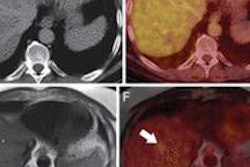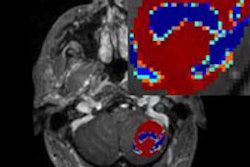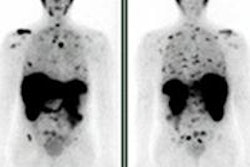Everyone agrees that improvements are needed in reporting incidents during radiation therapy treatments that can affect patients. But such reporting is tricky, especially if radiation oncology facilities aren't even using the same language to describe incidents.
Canadian researchers hope to address the problem with a new taxonomy designed to create a common language for describing the type and severity of radiation therapy incidents. They hope that, ultimately, the taxonomy could be used throughout Canada, according to an article published online October 23 in the Journal of Medical Imaging and Radiation Sciences.
The need for better incident reporting has become more evident as radiation therapy technology becomes more complex and powerful. Incident reporting not only affects staff at the facility using it, it can also improve healthcare quality more globally as data about incidents are shared across institutions, according to a team led by Catarina Lam from the radiation medicine program at University Health Network's Princess Margaret Cancer Centre in Toronto.
A number of different taxonomy models for classifying radiation therapy incidents already exist, but these have certain weaknesses. Some are too generic, others are overly complex, and some don't include provisions for learning and error prevention. Others are based on specialized concepts that require high levels of operator training and thus aren't easily adapted to clinical environments.
The research team led by Lam developed a new taxonomy model based on existing classification schemes in radiation therapy, related frameworks for medical incident reporting, and the World Health Organization's conceptual framework for the International Classification for Patient Safety.
Rather than have their taxonomy focus on technical issues and equipment performance, Lam and colleagues emphasized treatment process issues and human factors that could lead to incidents. They created seven main classes of incidents:
- Incident nature: whether or not the incident affected the patient
- Impact: the incident's impact on a patient, treatment, or organization
- Incident type: descriptive term for a category of incidents of a common nature
- Stage of origin: the stage along the radiation therapy treatment path where the incident originated
- Stage of discovery: the stage along the radiation therapy treatment path where the incident was discovered
- Contributing factors: the circumstances, actions, or influences thought to increase the risk of an incident
- Preventative strategies: the steps that could be taken to prevent a recurrence of the incident
To test the taxonomy, the researchers used it to classify 246 sequential incident reports from 2010 in their hospital's incident reporting database. They revised the classification scheme if it didn't adequately address the type of incident.
The group then wanted to see how the taxonomy might perform at different radiation oncology facilities in two sets of tests involving two radiation therapists responsible for incident reporting at their facilities. In the first test, the practitioners classified a group of simulated incidents drawn from characteristics found in the original incident reports, and Lam and colleagues calculated the agreement between each person's classification.
The second test took place after Lam's group revised the taxonomy if agreement between the practitioners was lower than 70%. A second test of 30 cases was administered to check agreement after the revision.
The research group found that agreement was low between Lam's classifications and those of the practitioners in the first round of testing, with agreement higher than 70% for only two of the seven classes. But agreement improved markedly with the second test, after revisions were made to the taxonomy.
| Taxonomy agreement scores between reviewers by test | ||
| Classes | Test 1 | Test 2 |
| Incident nature | 90% | Not tested |
| Impact | 62% | 81% |
| Stage of origin | 13% | 83% |
| Stage of discovery | 73% | 87% |
| Incident type | 33% | 70% |
| Contributing factors | 25% | 87% |
| Preventative strategies | 46% | 93% |
Lam's team believes that the taxonomy they've developed could have a number of practical applications. Radiation therapy sites could learn more about their incident reports using a feedback loop built into the model. The taxonomy could also be implemented into an electronic information management system, which would enable data to be organized, searched, and retrieved.
As a next step, the researchers advise that the taxonomy be evaluated by radiation therapy practices across Canada to further refine the design and to facilitate adoption throughout the country.
"With the wide adoption of this taxonomy provincially and nationally, incident learning within and between institutions can take place effectively, thereby enhancing our ability to achieve the overarching goal of improving patient safety," they concluded.



















